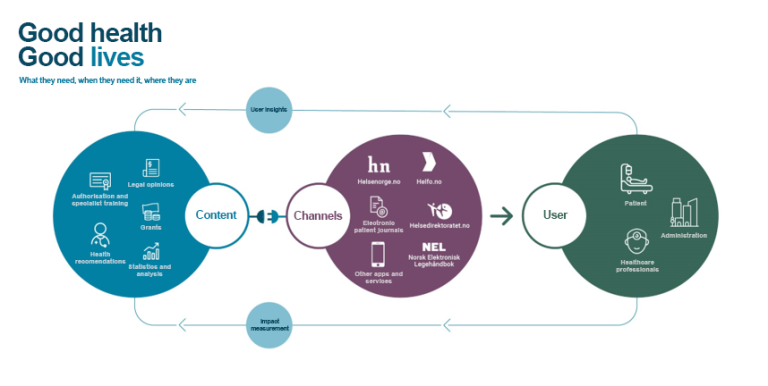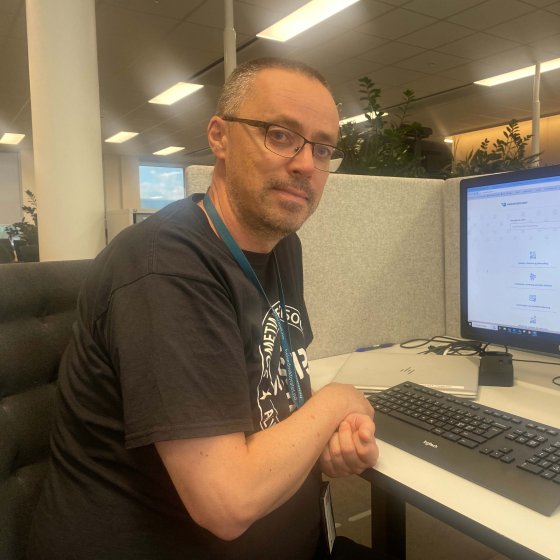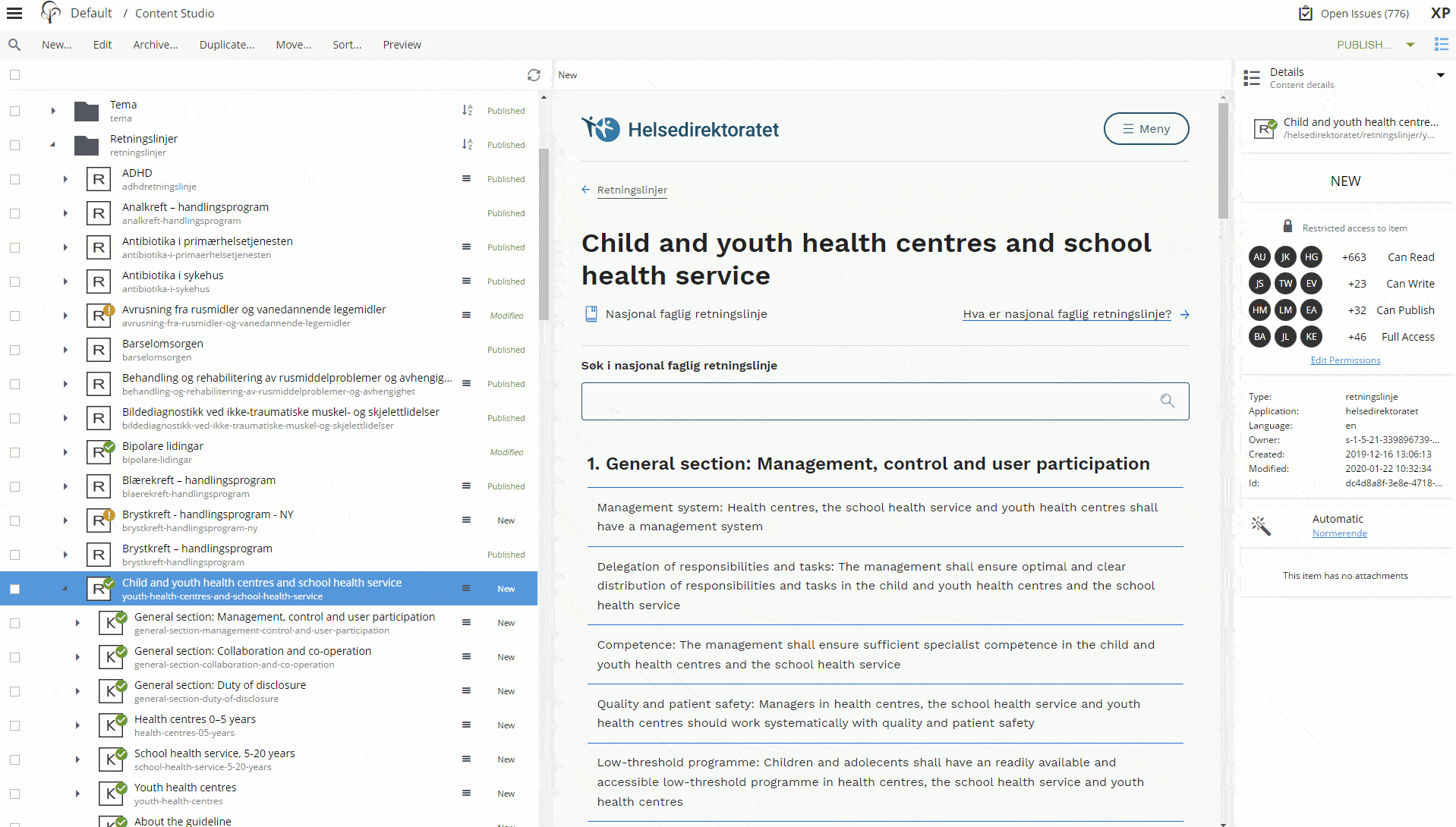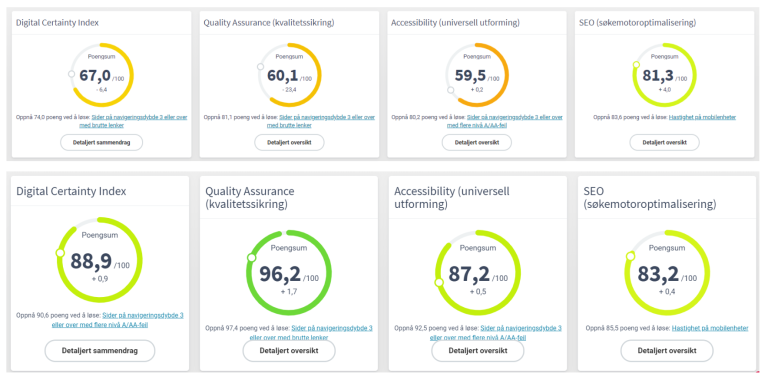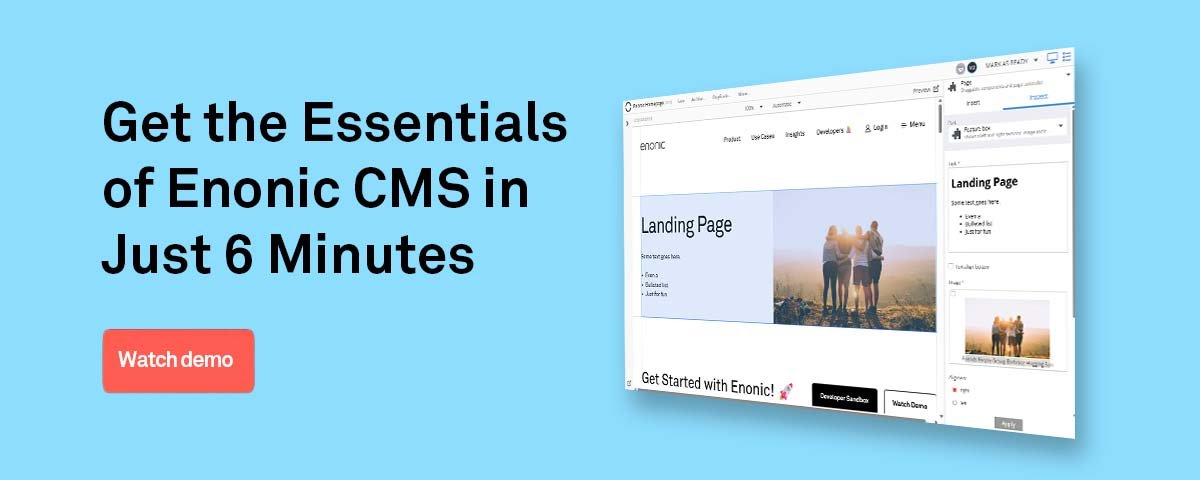
Reusable Structured Content Model for HDIR
Addressing both regulation and user expectations, the Norwegian Directorate of Health delivered complex information from several sources via multiple channels to different users—in one solution.
The Norwegian Directorate of Health is an executive agency and professional authority under the Ministry of Health and Care Services in Norway.
In 2013 the Norwegian healthcare authorities developed a strategy for improved health services, based on knowledge and best practice, and with fewer variations.
A vital part of this mission for the Directorate of Health is to provide user-friendly access to verified health information and services for professionals, private individuals, and researchers.
The authorities had their own set of requirements as well:
- Users and their needs should be the fundamental basis
- Public services should be experienced as cohesive and holistic
- Content reuse should be facilitated
- Content should be available in APIs fit for machine learning
Challenge
The digital solution of the Directorate of Health consisted of numerous, sometimes outdated tools. In addition, the integrations were poor, leading to suboptimal administration of content and services.
The specific platform was based on an old SharePoint solution, with quarterly technical updates. This was a sluggish process requiring six weeks of testing every time.
As for the user situation, physicians, chief physicians, nurses, and other health personnel wanted recommendations in their daily tools, a solution for quick references, and the possibility of in-depth study when needed.
Health professionals also wanted access to guidelines from a single, unambiguous source of authority. Also, private users were missing information on e.g. their specific rights in a given context.
Another central issue was the ambition to reuse content, both in owned channels and third-party channels. Large amounts of identical content was written again and again, and when copied to other channels the content often started to diverge and lose verifiability.
It was obvious that the old solution could fulfill neither the user expectations nor the authorities’ requirement of digitalization, reuse, and distribution of content.
However, the new digital strategy had stated a clear road ahead, with emphasis on “what users need, when they need it, where they are.” The decision was made to implement a new digital platform, a new API solution, new websites, and a new content model.
Solution
The primary channels of the Directorate are Helsedirektoratet.no for professionals and HelseNorge.no for the general populace. The Directorate of Health therefore required a digital platform able to manage both websites from one place, as well as distribute content to other channels facing the target groups.
The Directorate of Health launched a procurement process in January 2018, choosing Netlife in June with 99x as technical subcontractor and Enonic as digital platform. The development project began in August 2018, with a launch in May 2019.
Enonic is open-source and especially suited for technical agencies like 99x. With it, developers can build solutions for efficient integration of third-party systems and databases, like medical coding and judicial frameworks.
Furthermore, Enonic allows the editors from the Directorate to manage content in accordance with the health authorities’ established reusable content model. Setting up attributes and templates is intuitive, and the reuse of content is enhanced through the structured, content-first nature of Enonic.
Enonic is also a universal CMS, enabling functionality from traditional CMS and headless CMS in one. This hybrid solution allows for interactive previews and visual page editing. The content is published to the websites and the Directorate’s API, which can be fetched by others.
A significant part of the Directorate’s work in launching a new and modern digital solution was organizing and structuring the content. Breaking up old PDFs and large pages into semantic pieces is achievable through Enonic’s flexible but ordered content model.
The Directorate of Health has managed fields in Enonic’s structured content types to allow for standardized codes from the international health sector. A term for e.g. diabetes can be used as an independent content item, as part of a wider guideline, or in browsing for diabetes.
Enonic’s integrated search engine query both single items and larger items where the search phrase is included as a reusable component.
These content items, both small and large, direct and contextual, and always up to date, can then be reused by third parties. For instance, Legehandboka.no retrieves a diabetes content item from Enonic and the Directorate’s API to use in their own article on diabetes.



